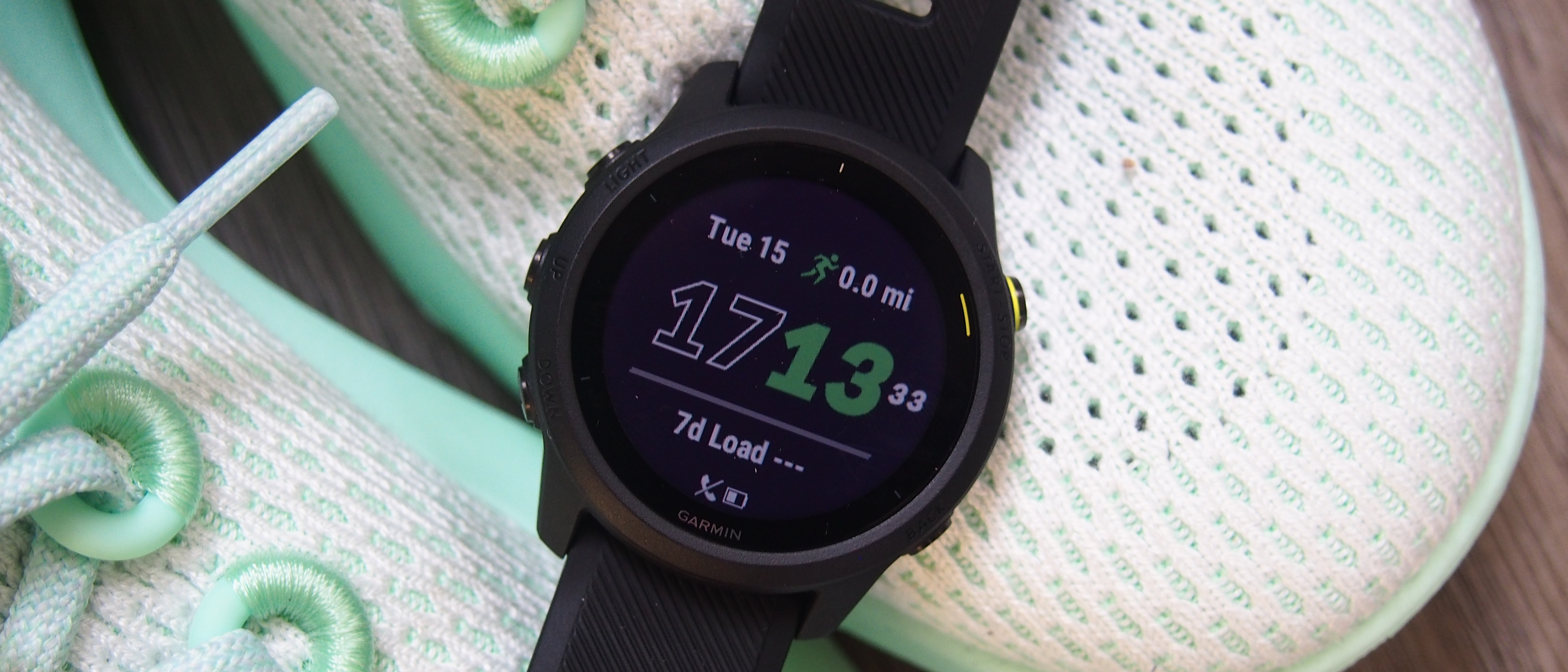TechRadar Verdict
The Forerunner 745 is another solid addition to Garmin’s family of watches. It makes good upgrades on the 735XT, whether it’s the smaller design or the more useful training analysis insights. Our main gripes lie with the battery life outside of tracking and a price, which doesn't feel significantly cheaper than the 945 that sits above it. Also, watches like the Coros 2 put a question mark over why you should now be spending so much more on triathlon-centric features.
Pros
- +
Training advice and workout recommendations
- +
New smartwatch features
- +
Low price for a high-end Forerunner
Cons
- -
Pricier than similar Coros tri watches
Why you can trust TechRadar
The Garmin Forerunner 745 is the successor to the 735XT and remains an option that’s a good fit for runners and triathletes who can’t stretch to spending on the Garmin Forerunner 945.
Garmin has sought to pack its sports tracking features into a smaller case design than the 735XT, albeit while adding new sensors like a pulse oximeter and smartwatch features like a built-in music player and payments.
Like other Forerunners, you’re going to get a watch that delivers a great, largely accurate tracking experience for runners, swimmers, cyclists and even indoor activities like indoor rowing. There’s plenty of metrics to dig into during activities and after them with support for additional sensors and apps from Garmin’s own Connect IQ store.
The addition of payments and music means it plays better as a smartwatch too and it worked well paired up to an iPhone and an Android phone. Though payment support still doesn’t cover a huge range of banks and streaming music still does knock the battery life.
The addition of a smarter, more actionable recovery advisor is welcomed, though it pays to use an external chest strap when tracking activities that feed into those insights. That way you get reliable data to influence the advice we found on the whole reliable. You now also have those smart workout recommendations that seemed to fit in with our training routine.
We found the 745 another Garmin watch that goes about its job in a very competent way. It’s just a shame that you don’t get more battery life for the price and it feels like maybe it should be a little cheaper when you compare it to what the competition offers.
Garmin Forerunner 745 price and release date
- Costs $499 / £449 / AUS$849
The Garmin Forerunner 745 was released in September 2020, priced at £449.99/$499/AUS$849. That’s roughly £150 more than the Forerunner 735XT and £70 less than the Forerunner 945.
There are also additional bands available that are priced at £29.99 (about $40 / AU$50), which are cheaper than the official straps for the Forerunner 945 and around the same price as the official Forerunner 245 straps.
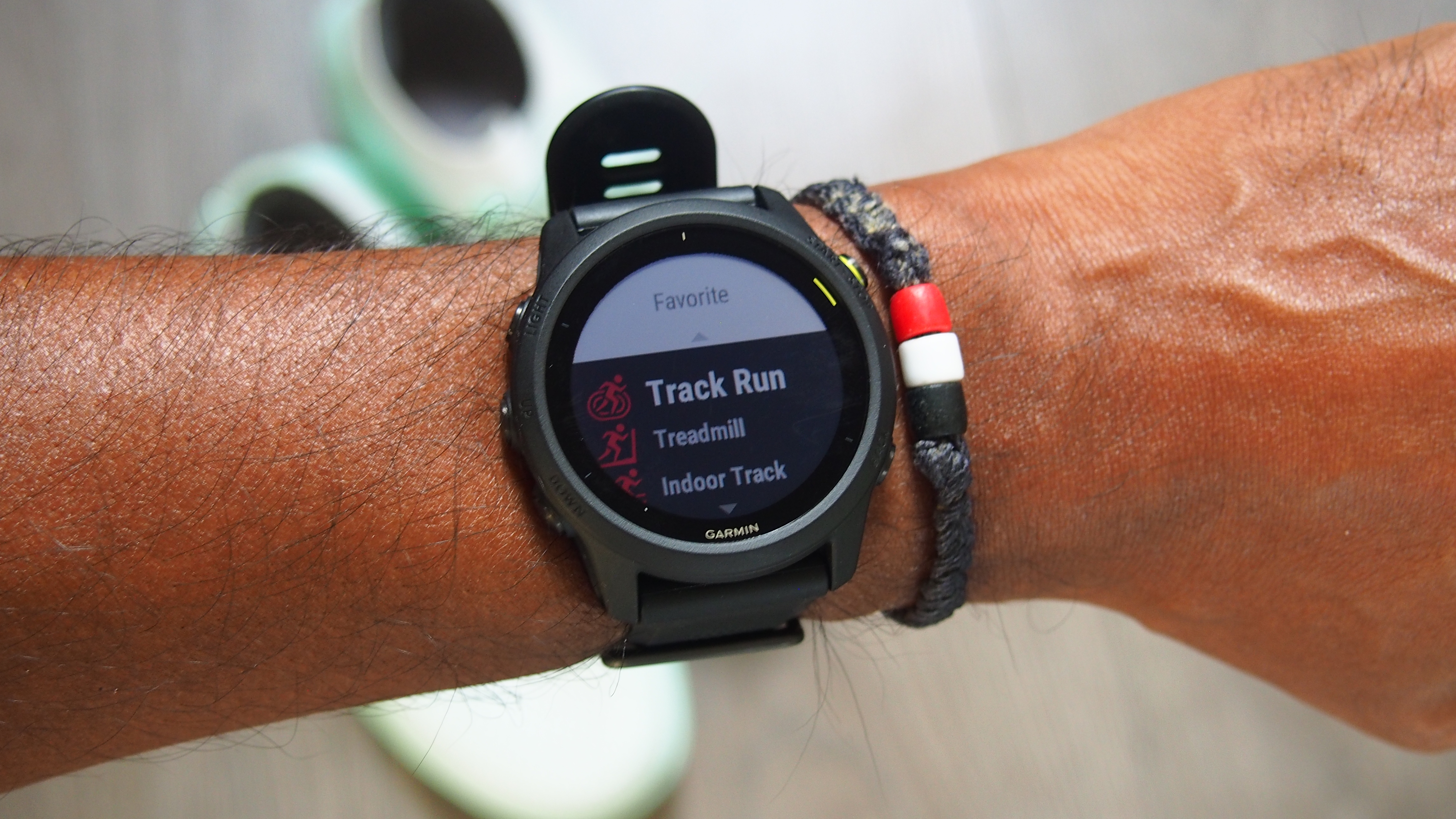
Design and display
- Smaller case size than 735XT
- Safe for pool and open water swimming
- Interchangeable strap
With the 745, you’re getting something that follows the same design language as the Forerunners that sit above and below it. It’s got a fully round 43mm polymer case that measures in at 13.3mm thick and weighs 47g.
Compare those dimensions to the 735 XT and you’re getting something that’s smaller but thicker. It also lives smaller on the wrist compared to the 945 and is only slightly bigger and thicker than the 245. It feels like a small watch on the wrist and certainly doesn’t feel like a heavy watch to run or swim with either.
It’s paired up with a 22mm silicone band that are interchangeable and as a package it’s slapped with a 5ATM water rating making it safe for showering and swimming. That strap was no cause for concern from a comfort point of view, and will feel very familiar if you’ve used another new Forerunner.
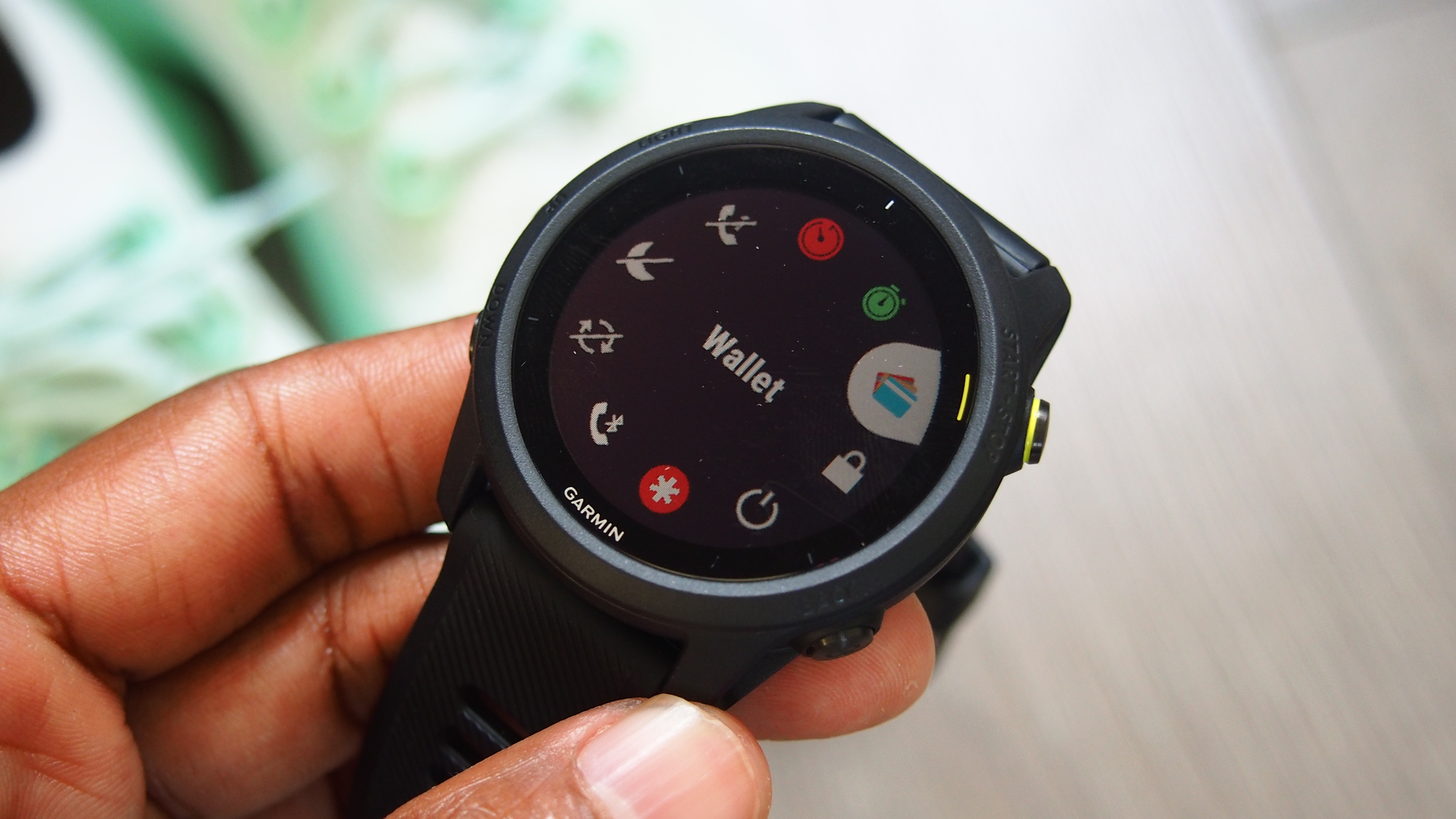
If you care about colour options, there are four looks to choose from: black, neo tropic, magma red and whitestone. These are colors that you will find across other Forerunners like the 45 and the 245.
Garmin includes its typical five physical button array and a 1.2-inch, 240 x 240 transflective display, which means it’s matching the Forerunner 245 for size and resolution. We didn’t expect it to get the same colour display treatment as the Garmin Venu, and the screen choice ensures you have something that’s suitable to view in bright light or when you hit the pool.
Ultimately, Garmin hasn’t done anything radically different here on the design front. It brought the 745 in line with other Forerunner watches, made it a smaller watch to train with and stuck to a trusted formula, which works well on the whole.
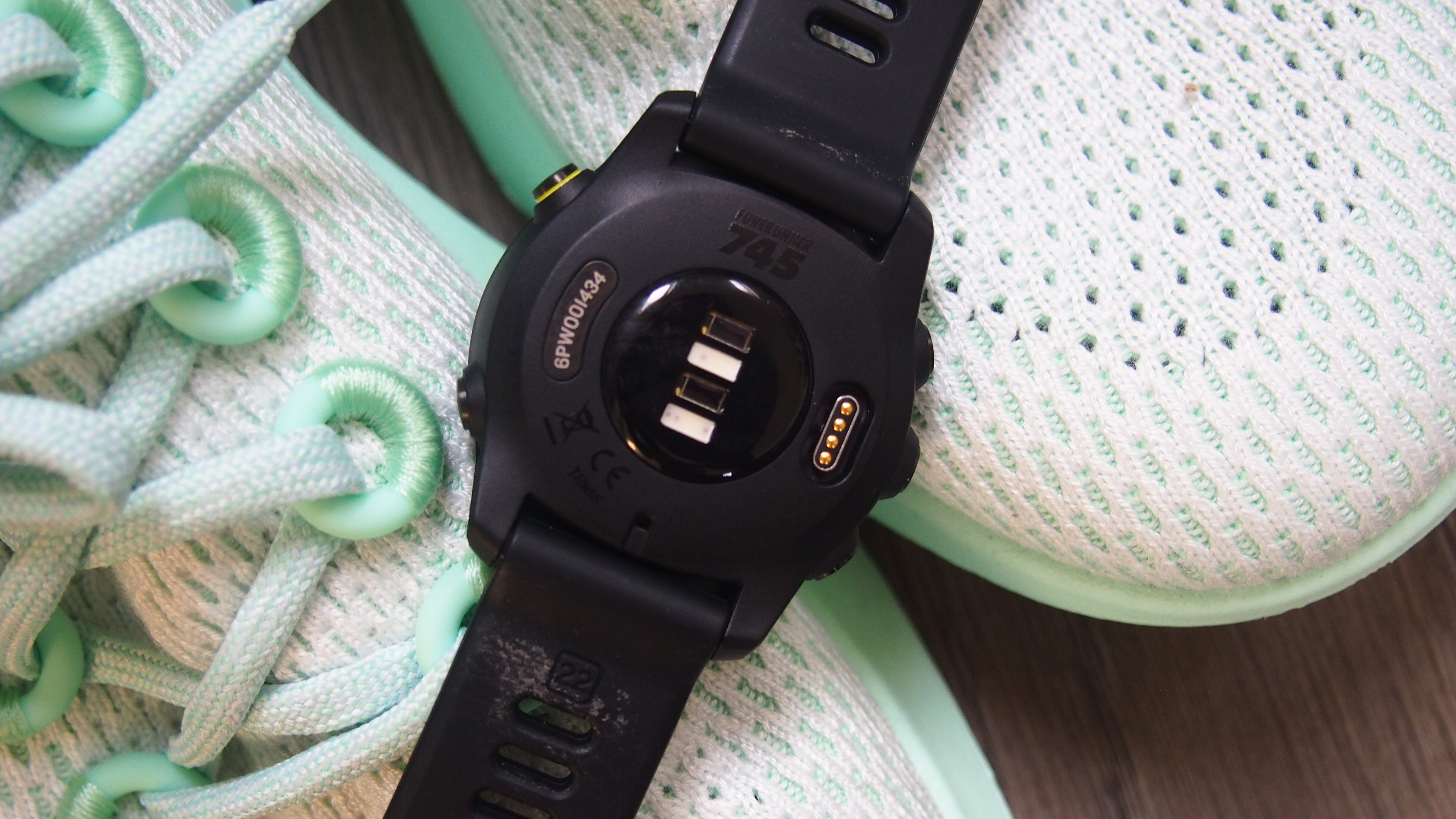
Features and fitness
- Reliable GPS performance
- Improved training advice
- Heart rate performance good, but chest strap is way to go
Sports and fitness tracking are unsurprisingly at the core of the 745 and you’re getting plenty in the way of what you can track, metrics you can see and thinking more about the effects of your training schedule.
Looking at the sensors, you’re getting GPS, GLONASS and Galileo satellite systems to cover tracking outdoor activities, which we found picked up a signal nice and quick in busier and more open environments. You can upload routes to follow on the watch from Garmin’s own route builder or from the likes of Strava and Koomoot, which gives you some navigation features like TracBack that safely directed us home on a few runs.
There’s Garmin’s Elevate heart rate monitor around the back and you have ANT+ and Bluetooth connectivity to pair additional sensors including Garmin’s Varia and Vector devices and Garmin’s new HRM Pro heart rate monitor strap. You’re also getting a SpO2 sensor, which has been rolling out onto most of Garmin’s watches, though using it during sleep or continuously does significantly impact on battery performance.
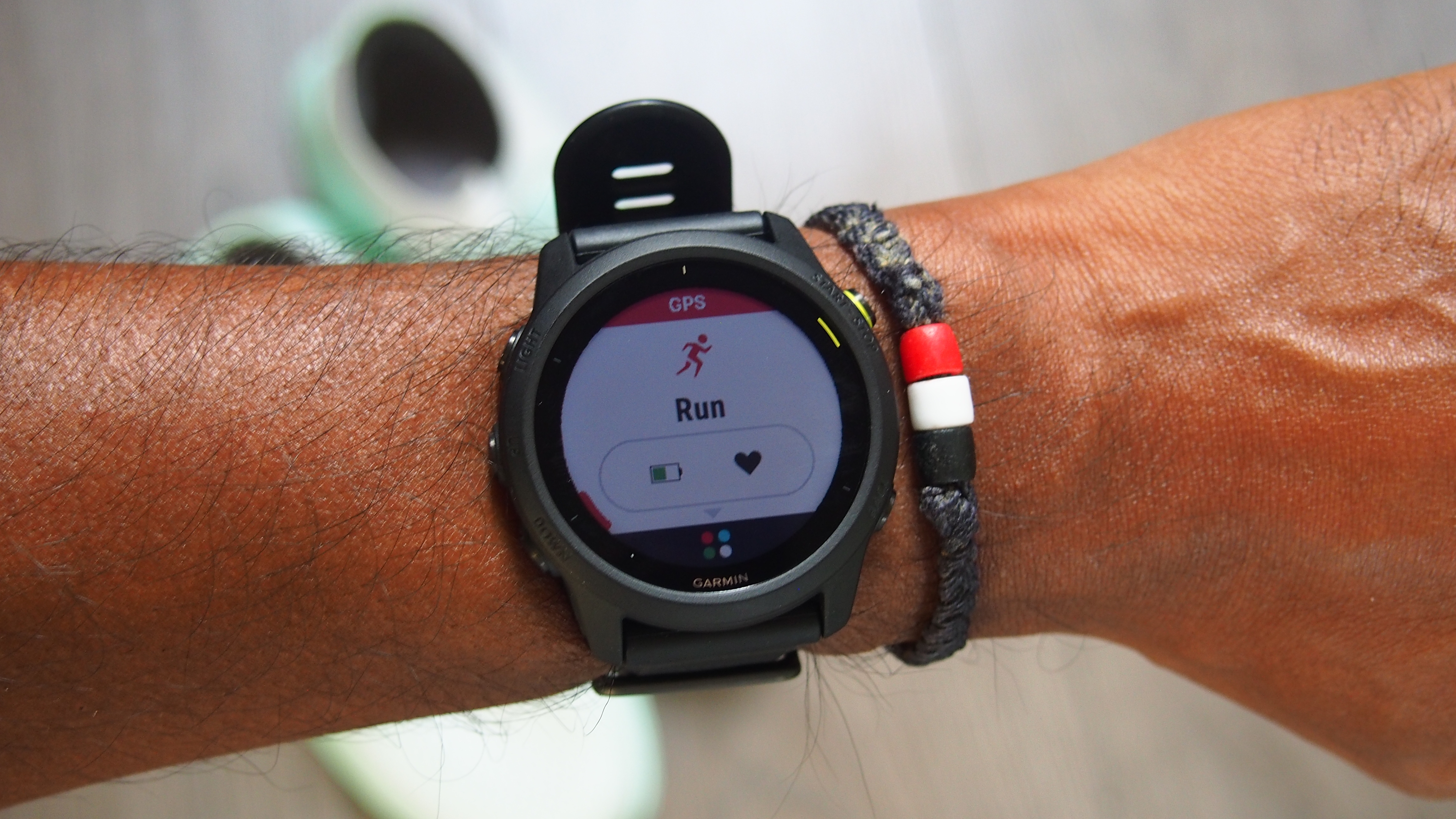
In terms of dedicated sports modes, you’re getting the ability to track runs including a new dedicated track running mode. It’ll cover cycling (indoor and outdoors), pool and open water swimming and of course there is a triathlon mode. There’s plenty of other sports profiles to tap into whether you’re off skiing or having a Zwift session. You’re also getting access to Garmin Coach to follow training plans for races here too.
For running, it’s all pretty familiar stuff to what you’ll find with other Forerunners. For a mix of road running and trail runs it pretty much matched up to another Garmin running watch with only small differences in aspects like distance tracked and metrics like average pace. Heart rate data was largely in line when compared to a MyZone heart rate chest strap monitor for average and maximum heart rate readings too.
Like a lot of optical sensors though, when you crank up the intensity, accuracy begins to falter. The 745 certainly doesn’t do that in a really bad way, but we’d say pair up that heart rate monitor chest strap to get the most accurate results in real-time and for workout training insights which we’ll get into next.
It’s these training insights where the 745 really feels like an upgrade on the 735XT. You'll get to see things like Training Status, Load and Load Focus to show you what type of training you’ve been doing and whether you’re getting the balance right. There’s now altitude and heat acclimation insights to tell you how you’re adjusting to more demanding terrain and conditions.
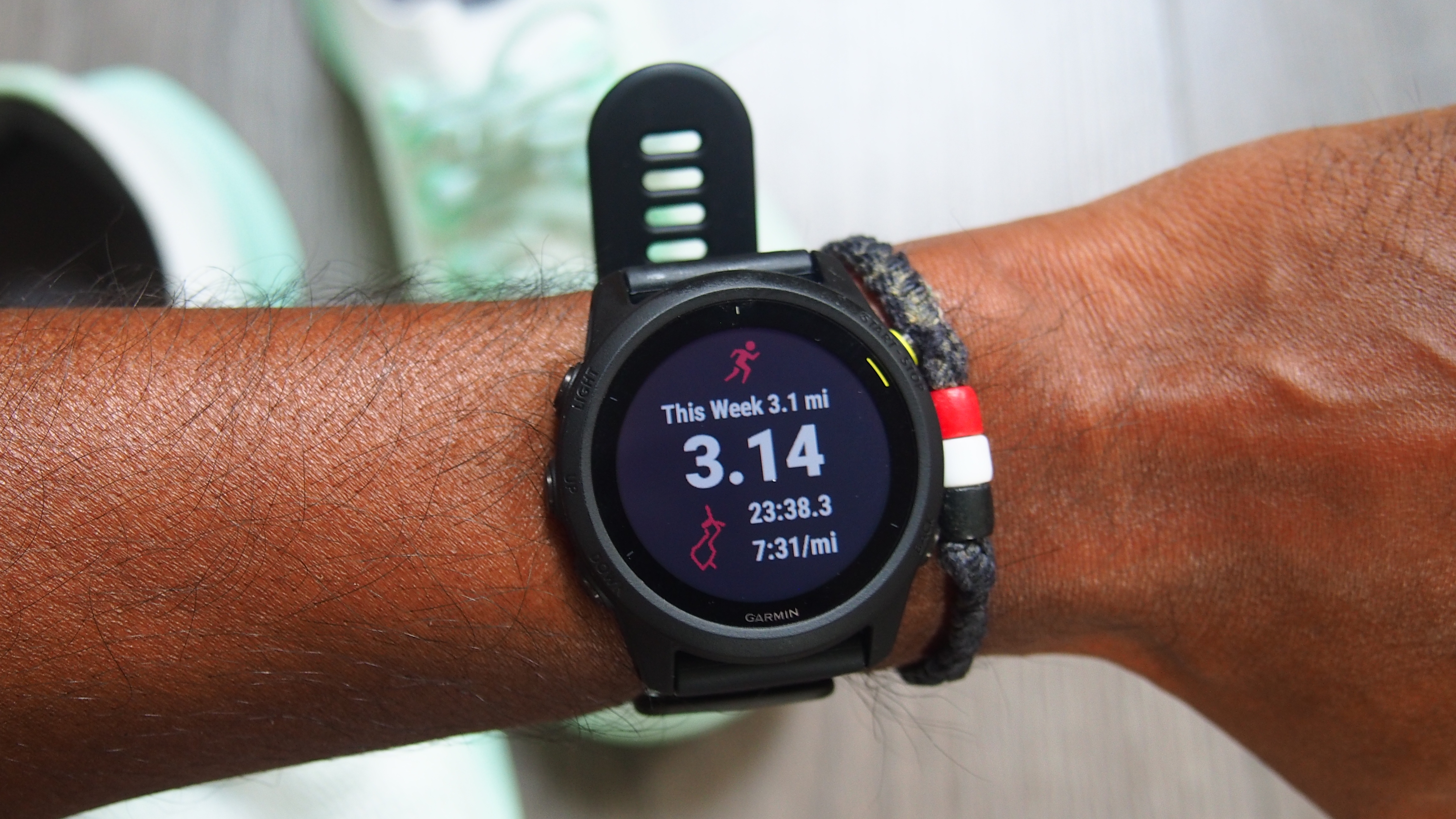
Recovery has been a focal point for Forerunner watches for a while now, but for the 745, it’s stepping things up in terms of its usefulness. It will recommend how long you should recover between tough workouts based on stress measurements, sleep and other daily workouts.
This idea that it’s taking more factors into consideration before recommending recovery times, is a welcome improvement. We found those recommendations on the whole reliable in tune with training. So after a pretty tough race, it suggested a couple of days off. It will also alert you when you’ve had the right amount of sleep to aid that recovery.
What we would say is that to get the most reliable results, a lot of factors have to fall in place. A chest strap is needed to factor in workouts to these recovery suggestions. The heart rate data that drives stress insights feels reliable on the whole, though we think that slightly hit and miss sleep tracking could wrongly influence those suggestions.
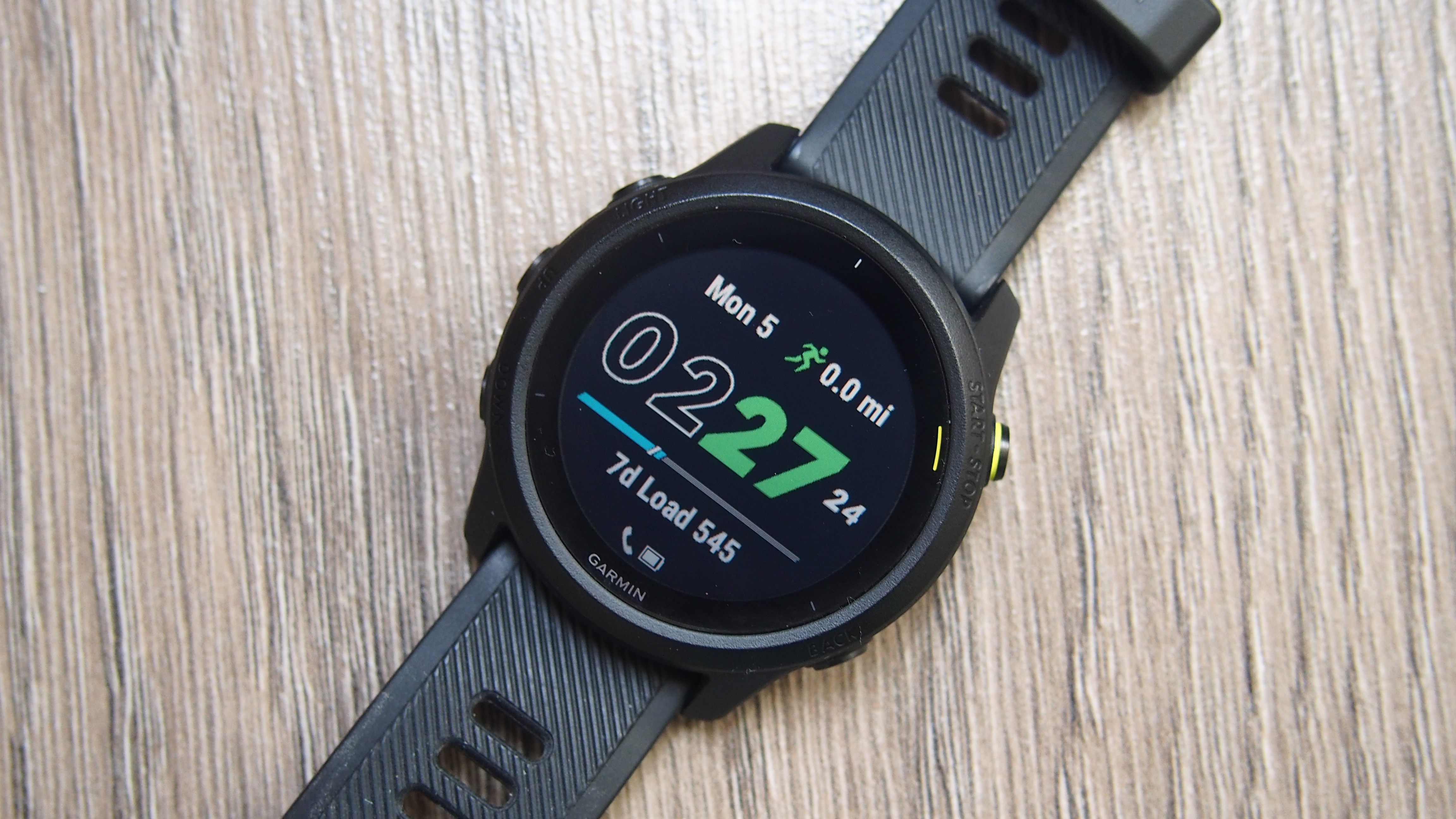
On the whole though, it felt more useful than the version of the recovery advisor on other Garmin watches and we hope it won’t be long until it’s rolling out to other Garmin watches too.
The other big software addition is Suggested Workouts. This is designed for runners and cyclists only right now offering workouts that fit in well with your training schedule. It sounds a little bit like Polar’s FitSpark feature, though it recommends running and cycling-focused workouts as opposed to exercises focused on building mobility or strength, which you get with Polar.
Suggested Workouts are found by scrolling down from the watch face to reveal your widgets displayed. Suggestions will inform you why they think it’s beneficial and how it will be beneficial to your aerobic and anaerobic training.
You can select to do the workout and during it you’ll be able to see whether you’ve fallen behind target pace or distance. The timing and nature of the suggested workouts seemed to fit in with our logged workouts. It told us to rest when we had a particularly tough session and offered some pretty slow sessions to help build up mileage again.
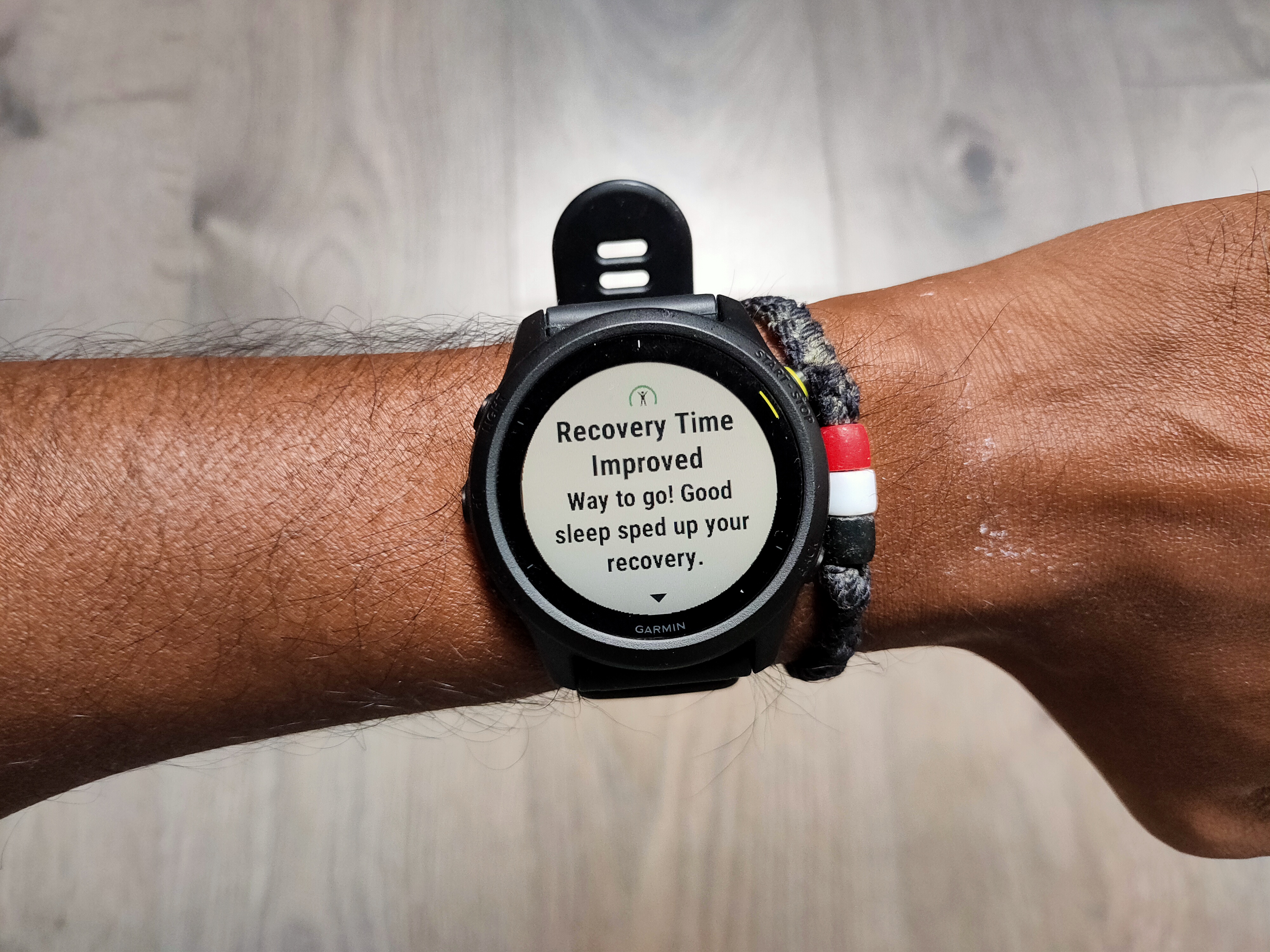
Smartwatch features
As a smartwatch, you’re getting pretty much everything Garmin has to offer on that front. It’s compatible with Android and iOS to bring notifications, Garmin Pay support, a music player for up to 500 songs and offline support for services like Spotify.
There’s also WiFi to offer another connectivity option for data syncing. You will of course get access to Connect IQ, to get your fill of apps, widgets, data fields.
That smartwatch experience on the whole is good enough. Notification support works better when paired to Android phones and the banks supported for Garmin Pay in different territories still isn’t great.
Garmin’s storefront hasn’t changed all that much over the years, but it does now have a dedicated app that lives separately from the Garmin Connect IQ one where you can review your data. It can still be a bit slow to sync over apps, watch faces, data fields and widgets and you’ll certainly need to do a bit of exploring to find the most useful additions.
Garmin has also added its safety and incident detection features that do still require having your phone nearby. It does make it a more useful watch to use if you spend a lot of time doing your training solo.
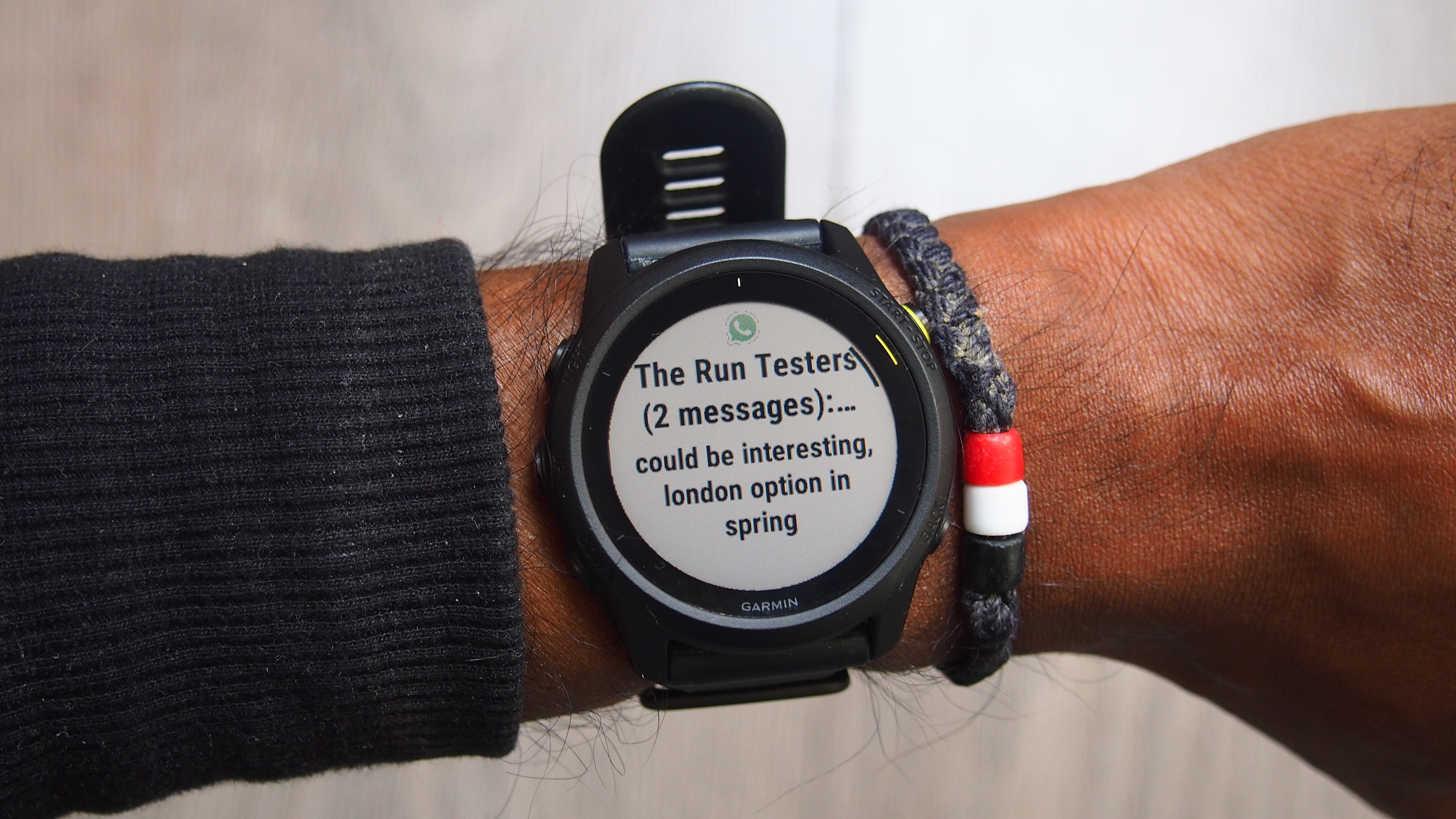
Battery life
In terms of battery life, you can expect up to one week in smartwatch mode, up to 6 hours in GPS mode with music and up to 16 hours in GPS mode. There’s also an UltraTrac mode that gives you 21 hours. These are very similar battery numbers to the likes of the Forerunner 645.
Battery performance is perhaps what we are most critical of on the 745. You can get a week out of it, and the drain from sports tracking doesn't seem to be anything out of the norm. It’s the time in between that tracking where the battery seems to drain quite quickly. We had notifications turned on, and pulse ox readings turned off, which does have a notable impact on battery life and it just didn’t feel all that great.
You’re not getting the power management modes you get on the Fenix, which perhaps makes more sense on a watch built for outdoors. That being said, the raw numbers just don’t feel all that impressive for something that’s designed for triathletes who might be training, competing over days and then want to use it in normal smartwatch mode.
When cheaper watches are offering more in battery life, it doesn’t seem too much to ask for something a bit more impressive.
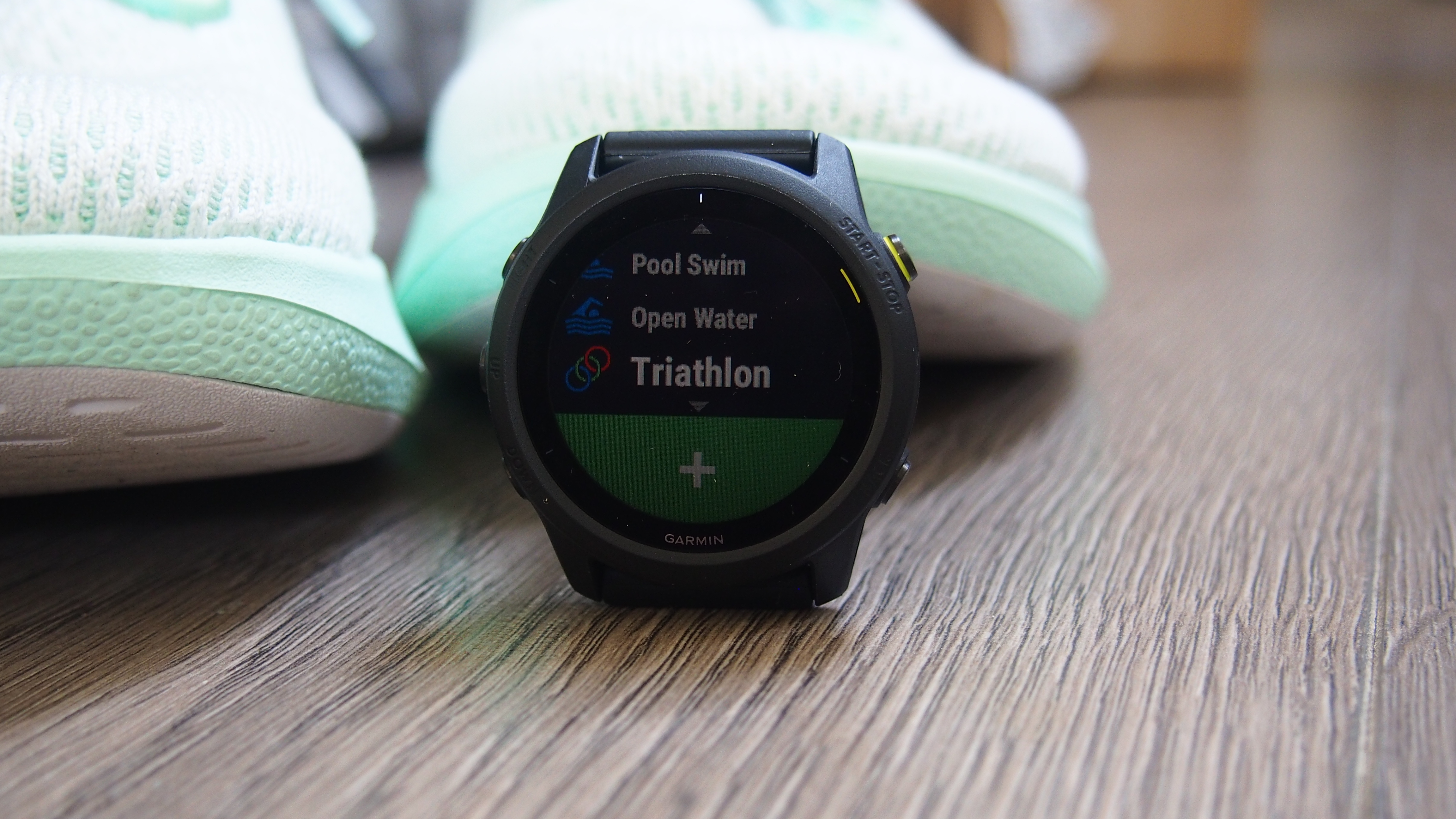
Buy it if
You want smarter training insights
While it’s likely the features will come to other Garmins, this is the only watch that will give you the more useful version of Garmin’s Recovery Advisor.
You want to upgrade from the 735XT
If you liked the 735XT, but have been waiting on a worthy successor, the 745 offers a lot of improvements to make the upgrade worthwhile.
You want reliable sports tracking
This is what Garmin excels in and that doesn’t change with the 745. Whether it’s running or swimming, you can expect plenty of data you can rely on.
Don't buy it if
You want big battery life
The 745’s battery performance is definitely the most disappointing aspect and you can get more stamina for less elsewhere.
You can spend more
The Forerunner 945 is more expensive, but if you can stretch to shelling out a bit more, you’ll get a significantly more feature-packed watch and vastly superior battery life.
You want maps
While the 745 does offer basic breadcrumb trail navigation, it doesn’t offer the ability to view full maps in the way you can on the Forerunner 945 and the Fenix series watches.
- We've rounded up all the best running watches available today
Michael is a freelance journalist who has covered consumer technology for over a decade and specializes in wearable and fitness tech. Previously editor of Wareable, he also co-ran the features and reviews sections of T3, and has a long list of bylines in the world of consumer tech sites.
With a focus on fitness trackers, headphones, running wearables, phones, and tablet, he has written for numerous publications including Wired UK, GQ, Men's Fitness, BBC Science Focus, Metro and Stuff, and has appeared on the BBC Travel Show. Michael is a keen swimmer, a runner with a number of marathons under his belt, and is also the co-founder of YouTube channel The Run Testers.
